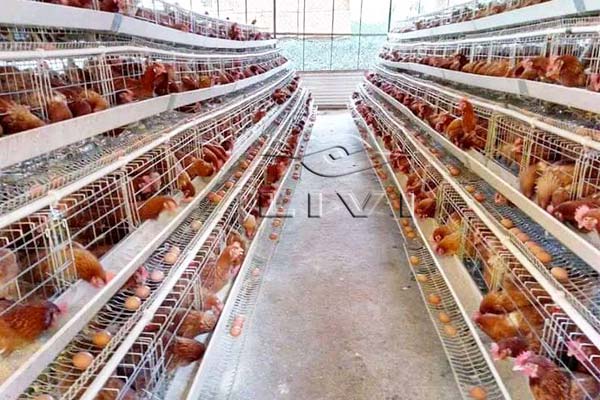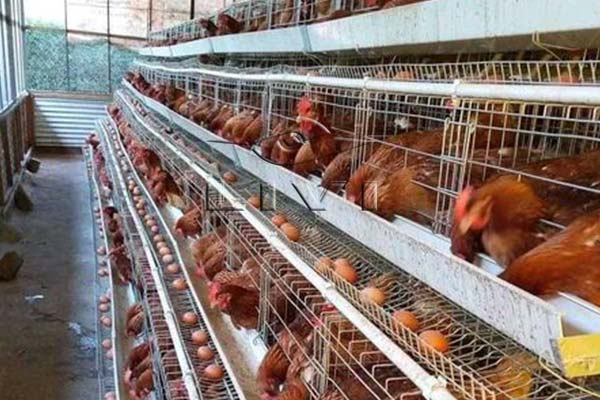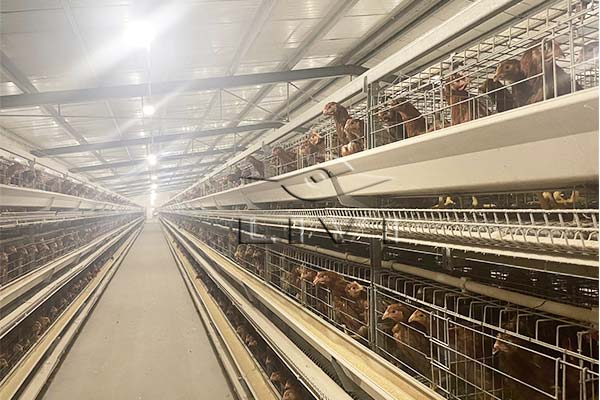Egg production equipment is vital for the efficient and sustainable operation of poultry farms. Whether you are a small-scale farmer or run a large commercial operation, investing in the right poultry farm equipment can significantly impact productivity, animal welfare, and profitability. In this comprehensive guide, we will explore the various aspects of egg production equipment, focusing on the cost of poultry farm equipment, and the specific needs of layer farm egg production chicken cages. By examining these elements from six different angles, we aim to provide a thorough understanding of the essential tools required for a successful egg production enterprise.

1. Types of Egg Production Equipment
There is a wide range of egg production equipment available, each designed to meet specific needs within a poultry farm. Understanding these types can help farmers make informed decisions about what to invest in.
a. Incubators and Hatchers
Incubators and hatchers are crucial for the initial stages of egg production. They provide a controlled environment for eggs to develop and hatch, ensuring a high hatchability rate and healthy chicks.
b. Brooding Equipment
Brooding equipment, including heat lamps and brooders, is essential for maintaining the optimal temperature and conditions for young chicks. Proper brooding reduces mortality rates and promotes healthy growth.
c. Layer Farm Egg Production Chicken Cages
Layer farm egg production chicken cages are designed to house laying hens in a safe and comfortable environment. These cages come in various configurations, including battery cages, enriched cages, and aviary systems, each with its own advantages and cost implications.
d. Feeding and Watering Systems
Automated feeding and watering systems ensure that hens have constant access to food and water, reducing labor costs and improving efficiency. These systems can be tailored to the specific needs of the farm.
e. Egg Collection and Processing Equipment
Automated egg collection and processing equipment streamline the collection, cleaning, grading, and packaging of eggs. This equipment reduces manual labor and ensures that eggs meet quality standards.
f. Waste Management Systems
Effective waste management systems, such as manure conveyors and composters, are essential for maintaining hygiene and reducing the environmental impact of poultry farms.

2. Cost of Poultry Farm Equipment
When setting up or upgrading a poultry farm, understanding the cost of poultry farm equipment is critical. Costs can vary widely based on the type and scale of the operation.
a. Initial Investment
The initial investment for egg production equipment can be substantial, especially for large-scale operations. However, this investment is necessary for long-term productivity and efficiency. Budgeting for high-quality equipment can save money in the long run by reducing maintenance and replacement costs.
b. Operating Costs
Operating costs, including energy, maintenance, and labor, should be factored into the overall cost of poultry farm equipment. Automated systems can reduce labor costs but may increase energy consumption.
c. Financing and Grants
Many farmers rely on financing options, such as loans or leases, to afford the high initial cost of poultry farm equipment. Additionally, government grants and subsidies may be available to support sustainable farming practices and equipment upgrades.
d. Cost-Benefit Analysis
Conducting a cost-benefit analysis can help farmers determine the return on investment (ROI) of different types of equipment. This analysis should consider factors such as increased productivity, reduced labor costs, and improved animal welfare.
3. Layer Farm Egg Production Chicken Cages
Layer farm egg production chicken cages play a crucial role in the efficiency and welfare of laying hens. Different cage systems offer various benefits and challenges.
a. Battery Cages
Battery cages are the most common type of layer farm egg production chicken cages. They are cost-effective and space-efficient but have faced criticism for animal welfare concerns. Many countries are phasing out battery cages in favor of more humane alternatives.
b. Aviary Systems
Aviary systems allow hens to move freely within a multi-tiered environment. These systems promote natural behaviors and have been shown to improve egg quality and hen health. However, they require a higher initial investment and more complex management.
c. Cost Considerations
The cost of layer farm egg production chicken cages varies based on the type and size of the system. Farmers should consider both the initial investment and long-term operating costs when choosing a cage system.
d. Legal and Ethical Considerations
Many regions have regulations regarding the use of layer farm egg production chicken cages. Farmers must stay informed about these regulations to ensure compliance and avoid penalties. Additionally, ethical considerations around animal welfare can impact consumer preferences and marketability.
e. Innovations in Cage Design
Recent innovations in cage design aim to improve both productivity and animal welfare. These include automated monitoring systems, better ventilation, and ergonomic designs that reduce stress and injury among hens.

4. Benefits of Investing in Quality Egg Production Equipment
Investing in high-quality egg production equipment offers numerous benefits that can enhance the overall success of a poultry farm.
a. Increased Productivity
Quality equipment ensures that hens are kept in optimal conditions, leading to higher egg production rates and better egg quality. Automated systems also streamline processes, reducing downtime and increasing efficiency.
b. Improved Animal Welfare
Better equipment, particularly advanced cage systems, can significantly improve the welfare of laying hens. Healthier, less stressed hens are more productive and have lower mortality rates.
c. Cost Savings
While high-quality equipment may have a higher upfront cost, it often results in long-term savings. Durable equipment requires less frequent replacement, and automated systems reduce labor costs.
d. Enhanced Biosecurity
Modern egg production equipment is designed with biosecurity in mind, helping to prevent the spread of diseases. Features such as easy-to-clean surfaces and automated waste management systems contribute to a healthier flock.
e. Compliance with Regulations
Investing in compliant equipment ensures that farms meet regional and international standards, avoiding legal issues and improving market access. High welfare standards can also attract premium prices for eggs.
f. Sustainable Practices
High-quality equipment often includes features that support sustainable farming practices, such as energy-efficient systems and waste recycling options. These practices can reduce the environmental impact of poultry farms and appeal to eco-conscious consumers.

5. Challenges and Considerations
While there are many benefits to investing in egg production equipment, there are also challenges and considerations that farmers must address.
a. High Initial Costs
The high initial cost of purchasing and installing egg production equipment can be a significant barrier for many farmers. It is essential to have a clear financial plan and explore financing options.
b. Maintenance and Repairs
Regular maintenance is crucial to keep equipment running smoothly and prevent breakdowns. Farmers must budget for ongoing maintenance and potential repairs.
c. Training and Management
Using advanced egg production equipment requires proper training for farm staff. Investing in training programs ensures that staff can operate and maintain the equipment effectively.
d. Technological Advancements
The rapid pace of technological advancements means that equipment can become outdated quickly. Farmers must stay informed about new developments and consider upgrading equipment to remain competitive.
e. Animal Welfare Concerns
Balancing productivity with animal welfare is a constant challenge. Farmers must choose equipment that meets welfare standards while also being cost-effective and efficient.
f. Market Fluctuations
Market demand for eggs can fluctuate, impacting profitability. Investing in versatile equipment that can adapt to changing market conditions can help mitigate this risk.

6. Future Trends in Egg Production Equipment
The future of egg production equipment is likely to be shaped by technological innovations, changing consumer preferences, and evolving regulatory standards.
a. Automation and Robotics
The use of automation and robotics in egg production is expected to increase, reducing labor costs and improving efficiency. Automated systems for feeding, egg collection, and waste management are becoming more sophisticated.
b. Smart Farming Technologies
Smart farming technologies, such as IoT devices and data analytics, are being integrated into egg production equipment. These technologies enable real-time monitoring and decision-making, improving productivity and animal welfare.
c. Sustainable and Eco-Friendly Solutions
There is a growing focus on sustainability in agriculture. Future egg production equipment will likely incorporate eco-friendly features, such as energy-efficient designs and waste recycling systems.
d. Enhanced Animal Welfare
As consumer awareness of animal welfare increases, equipment manufacturers are developing solutions that provide better living conditions for hens. Innovations in cage design and environmental controls will continue to improve hen welfare.
e. Customization and Modularity
Future equipment will offer greater customization and modularity, allowing farmers to tailor systems to their specific needs. This flexibility can help farmers adapt to changing market demands and operational requirements.
f. Global Market Trends
Global market trends, such as the rise of organic and free-range eggs, will influence the development of egg production equipment. Manufacturers will need to create equipment that supports these production methods while maintaining efficiency and profitability.
Conclusion
Investing in the right egg production equipment is crucial for the success of any poultry farm. By understanding the different types of equipment, the costs involved, and the specific needs of layer farm egg production chicken cages, farmers can make informed decisions that enhance productivity, animal welfare, and profitability. Despite the challenges, the benefits of high-quality equipment, including increased efficiency, improved animal welfare, and sustainable practices, make it a worthwhile investment. As the industry continues to evolve, staying informed about future trends and innovations will help farmers remain competitive and meet the demands of a changing market.
